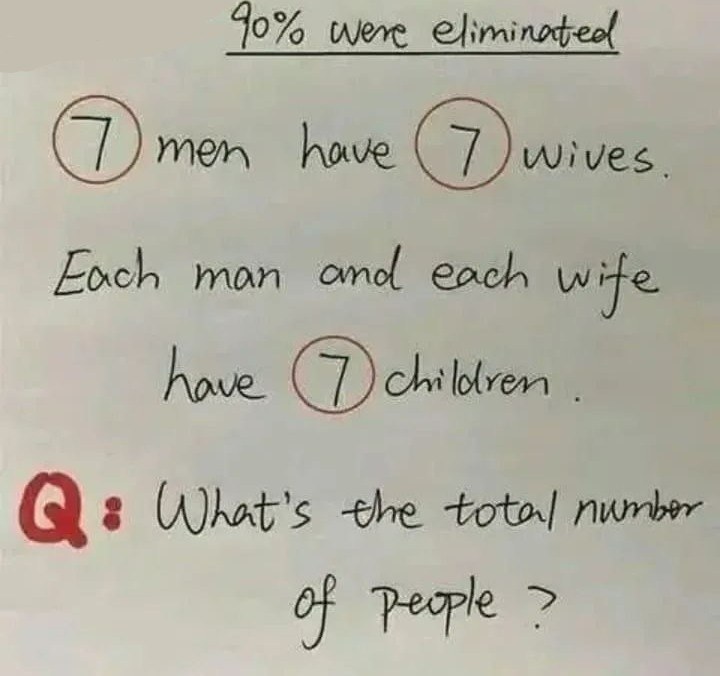There’s something captivating about brainteasers—those puzzles that seem simple at first but often challenge our logic, comprehension, and arithmetic skills. One such puzzle has left many scratching their heads, with claims that “90% were eliminated” after attempting to solve it. The puzzle poses a straightforward question, but its complexity catches people off guard.

Here’s the problem:
The Puzzle Statement:
- 7 men have 7 wives.
- Each man and each wife have 7 children.
Question: What is the total number of people?
At first glance, the math seems simple. But as with many puzzles, the trick lies in how we interpret the details. Let’s break down the problem step by step to understand it better.
Step 1: Analyzing the Data
We start with the basic information provided:
- 7 Men: The puzzle gives us that there are 7 men.
- 7 Wives per Man: Each of these 7 men has 7 wives. So, to calculate the total number of wives, we multiply 7 men by 7 wives per man, which gives us 49 wives.
Now, let’s move on to the children.
Step 2: Calculating the Number of Children
The next part of the puzzle tells us that each man and each wife has 7 children. But how do we calculate the total number of children?
- Each of the 7 men has 7 wives.
- Each of these 7 wives has 7 children. This means that each man has 7 children with each of his 7 wives.
So, to figure out the total number of children per man:
- 7 wives × 7 children = 49 children for each man.
Now, since there are 7 men, each with 49 children, we multiply the number of children per man (49) by the number of men (7). This gives us:
- 7 men × 49 children = 343 children.
Step 3: Adding Up the Total Number of People
Now that we’ve calculated the number of men, wives, and children, let’s add them all together to get the total number of people:
- 7 Men
- 49 Wives
- 343 Children
Summing these up:
- 7 (men) + 49 (wives) + 343 (children) = 399 total people.
Conclusion
The total number of people in this puzzle is 399. While the problem initially appears simple, its complexity lies in the multiplication and addition across different groups of people. The puzzle plays with our perception, making it easy to overlook key details, which is why so many people get tripped up. It’s a great example of how careful attention to detail and a systematic approach can help solve even the most confusing mathematical challenges.
Puzzles like these serve as excellent exercises for sharpening the mind and reminding us of the importance of logical thinking and careful calculation.





